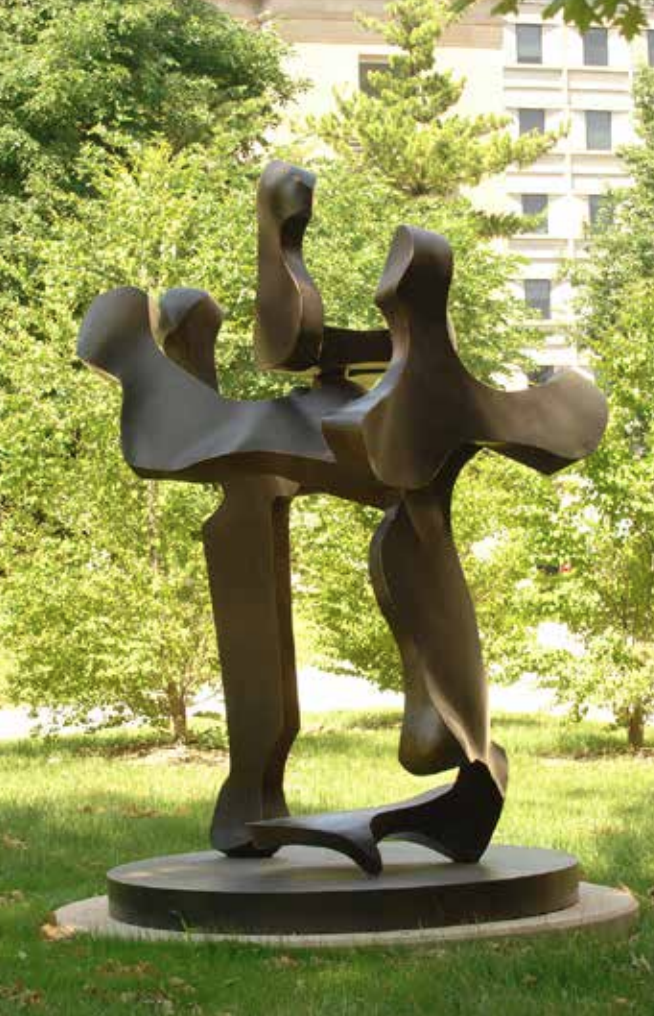
About the Art
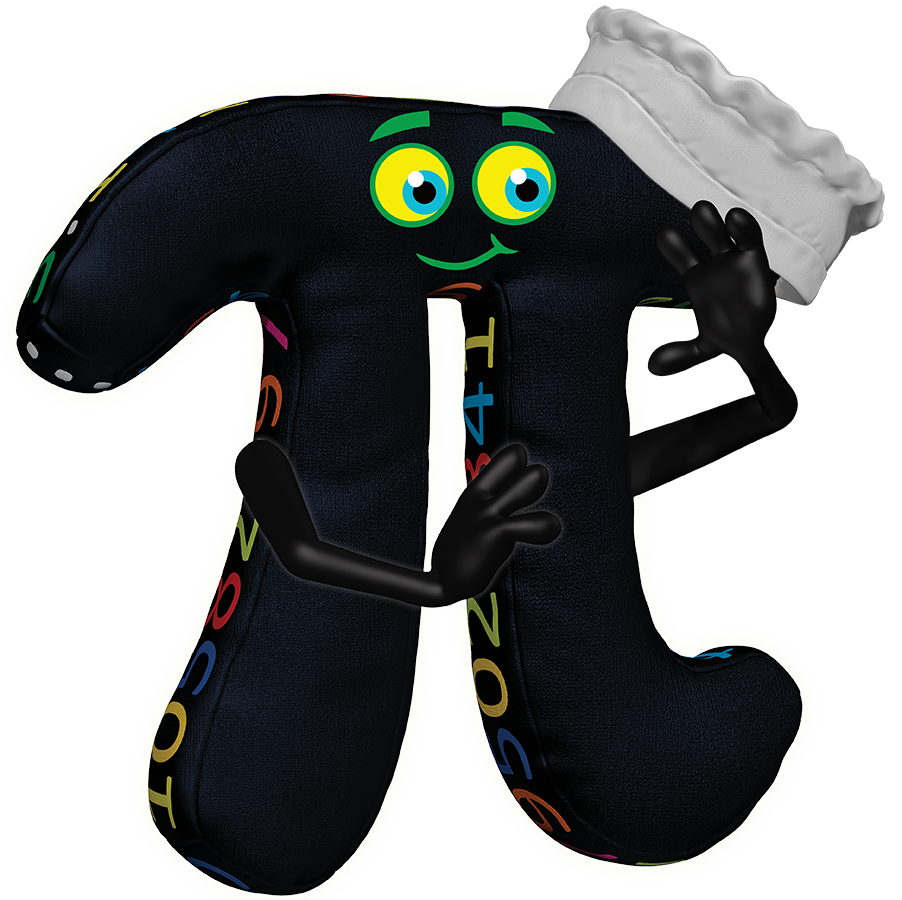
Bill Barrett’s sculpture, Bravo III, belongs to the classical tradition of American modernism, where clarity of form and structure are coupled with the harmonious juxtaposition of the curvilinear. The sculpture is sensual and intuitive rather than defined by an imposed logic. It floats through space, curving upward and outward, flirting with weight and gravity. Like much sculpture based on European traditions, Bravo III carries with it a memory of the archaic. Bravo III calls to mind the fluid effortlessness of calligraphic strokes and betrays a positivism to which many viewers feel drawn. The sophisticated construction, through a delicate balance of form and content, transcends the starker aesthetics of minimalism with a warmth and humanity.
Viewed from one position, Bravo III appears to be a “Circle of Life” of 3 individuals, while viewed from another position Bravo III reminds the viewer of the “King of Circles, Pi.”
This work was purchased with funds from the College of Business under the Art on Campus Collection by University Museums, Iowa State University in 2005.
About the Artist
Sculptor Bill Barrett was born in 1934 in Los Angeles, California and studied at the University of Michigan in Ann Arbor, where he received a BS, MS and MFA in design. Barrett is known as a sculptor, painter, and jeweler. Barrett played a central role in the second generation of American metal sculptors.
Philip Palmedo, author of the book, Bill Barrett, The Life of a Sculptor, recognizes the influences that expressionism, Asian calligraphy, and most importantly, surrealism has had on his work – “surrealism as access to the locus of memory and feeling, to the place where the human inclination to sing and to move gracefully has its origins.” His work is internationally known, specifically his sculptures with abstract design. Some examples follow.

Kindred, 2001, University of Michigan, Ann Arbor, Michigan

Hari IV, 1982, Staten Island, New York
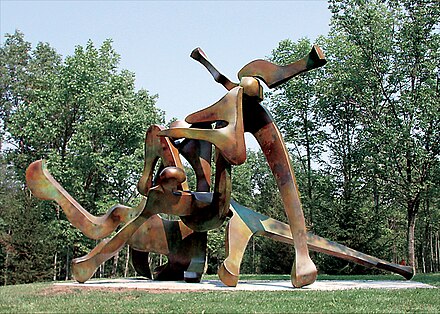
Melinda at the Beach, Hamilton, Ohio
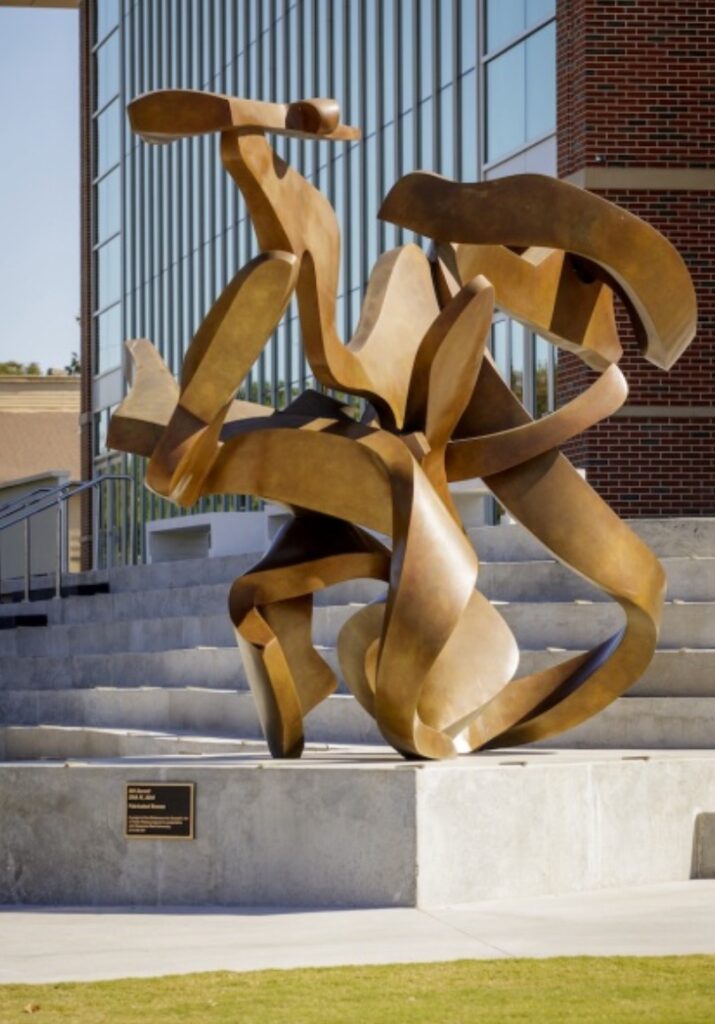
DNA IV, 2018, Oklahoma State University, Stillwater, Oklahoma
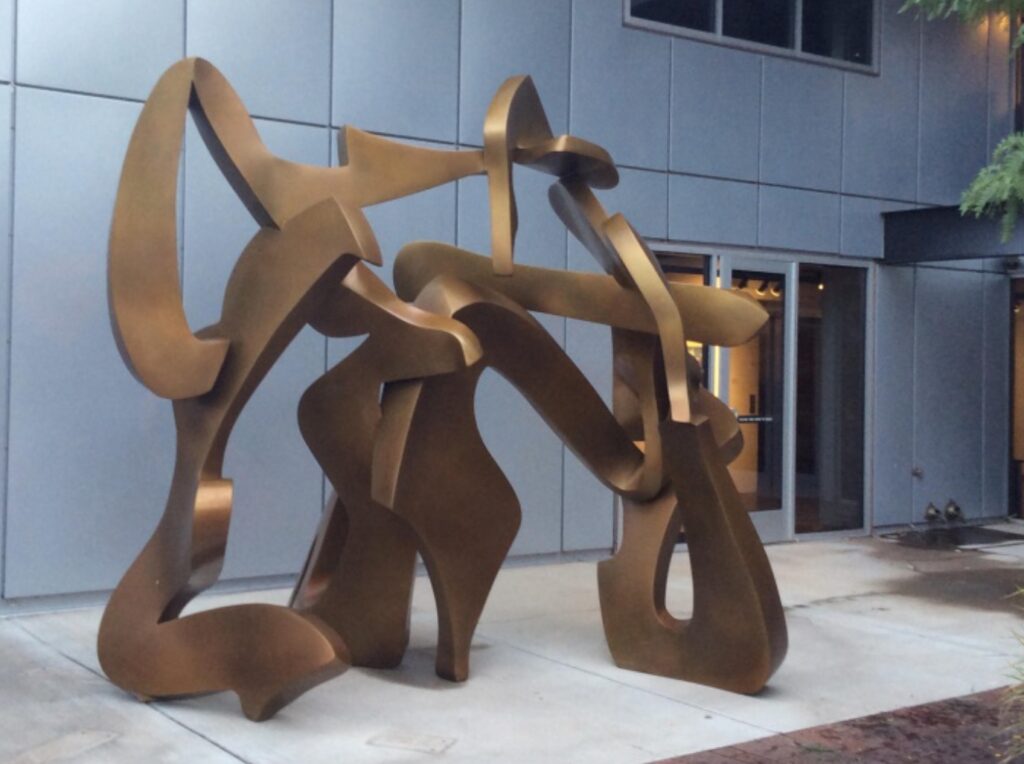
Action Abstraction, 2016, Nemocolin Woodlands Resort, Farmington, Pennsylvania
Relevant Terminology/History
Pi(π) is a mathematical constant. It is the ratio of a circle’s circumference to its diameter. For any circle, the distance around the edge is a little more than three times the distance across the “middle.” Pi means perimeter in Greek.
Check out The Numbers Show (written and produced by NumbersAlive!) as Host 0 welcomes, π, the King of Circles:
https://www.youtube.com/watch?v=gVDN2aepmUg&t=1s
American Modernism was an artistic and cultural movement in the United States beginning at the turn of the 20th century, with a core period between WWI and WWII. Like its European counterpart, American modernism stemmed from a rejection of Enlightenment thinking, seeking to better represent reality in a new, more industrialized world.
Learning Guide

- What do you think the title has to do with the art?
- How does Number Character 3 speaking about baking 3 human-looking cookies that merged together in the oven relate to Bravo III?
- How do you think STEM Squad Character π relates to the art? Why do you think Dr. Klemm designed Character π with a pie-baking hat?
- How do the two red images with white numbers relate to Bravo III’s spread in the physical book?
- How do the two hidden blue images relate to Bravo III’s spread in the physical book?
- Where is the “juxtaposition of the curvilinear” in Bravo III?
- Which is larger in magnitude, 3 or π? If you are offered 3 or π number of cookies, which would you choose? Why?
- How many 3 cookies is Number Character 3 preparing to eat?
- Which side of Bravo III’s spread in the physical book do you prefer — the left side with Stem Squad member π or the right side with Number Character 3?
- Why do you think some people like to memorize many digits of the digital expansion of π?
- Where do you see Melinda in the sculpture, Melinda at the Beach?
